Do Truck Campers Hold Their Value?
Thinking about getting a truck camper? You’re probably asking yourself: will it hold its value—or will it plummet like a used mattress? Fair question, especially with new models creeping over $40,000 (and that’s before you even talk about the truck underneath).
Here’s the quick take: yes, truck campers can hold their value better than most RVs—but only when they’re well-built and treated right. Let’s unpack how depreciation plays out, how truck campers stack up against other RVs, and what really helps them stay valuable over time.
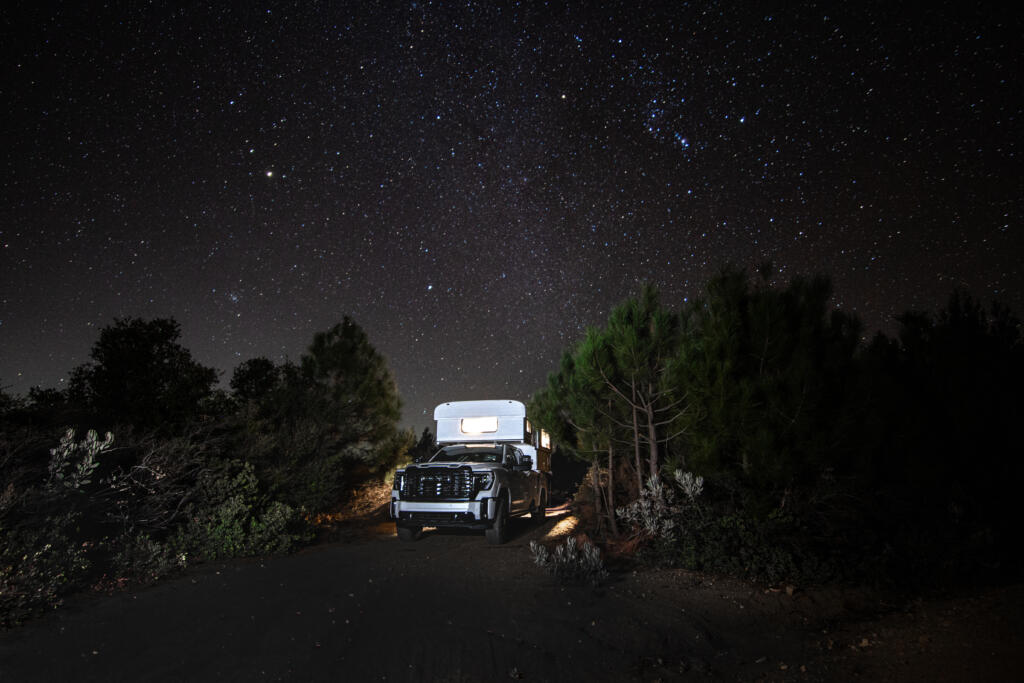
RV Depreciation Basics (and Why Truck Campers Are a Bit Weird)
According to J.D. Power and NADA Guides, the average RV loses about 20–30% of its value in the first year alone, and up to 50% by year five. Motorhomes, especially Class A types, tend to nosedive faster due to their expensive engines and complicated systems. Trailers and fifth wheels hold a bit more ground—they’re simpler, with fewer moving parts.
Truck campers fall into this strange, in-between space. They’re compact, don’t have their own motor, and cater to a pretty specific crowd. That smaller market means slower turnover, which can actually help keep prices more stable over time.
And here’s the kicker: a well-made truck camper can last 15–20+ years. In this case, age isn’t the enemy—neglect is.
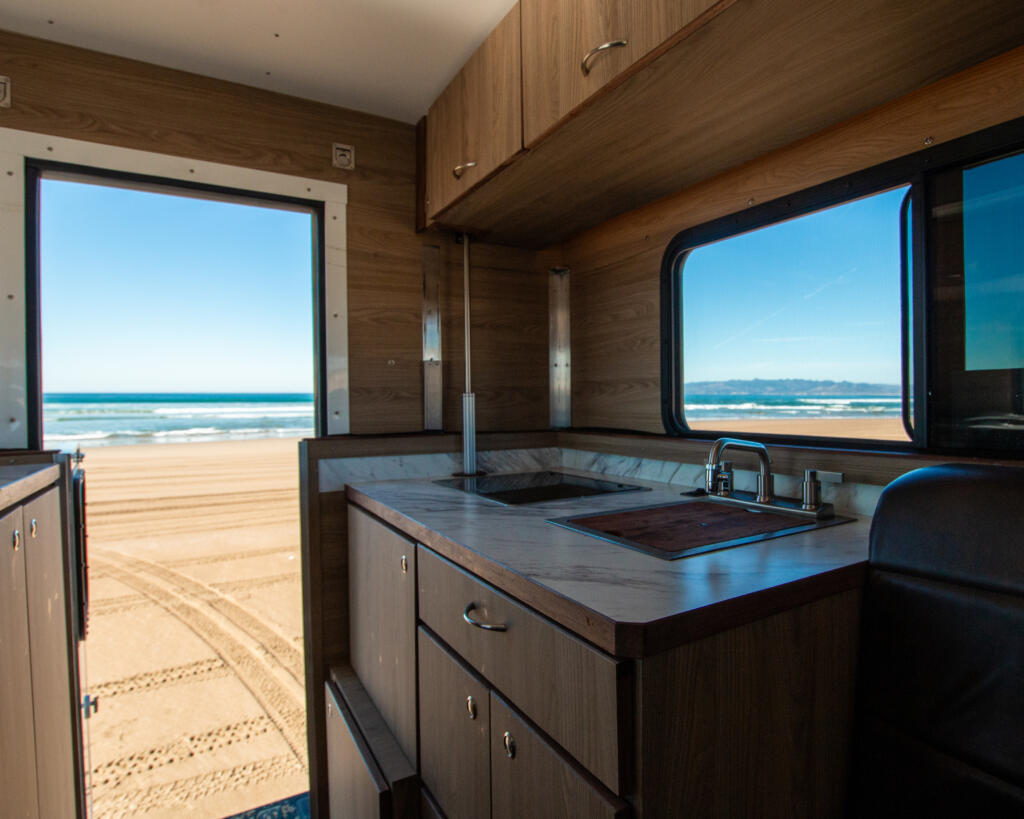
Why Some Truck Campers Keep Their Value Surprisingly Well
Some models really do age gracefully. Here’s why:
- Solid Construction & Thoughtful Design: Campers built with aluminum framing, tight seams, quality insulation, and wiring built for marine-level punishment hold up. Alaskan Campers are a great example—hard-sided, pop-up design, weather-sealed, and built to be repaired rather than replaced.
- Fewer Things to Break: No slide-outs. No engines. No transmissions. That’s less to maintain—and fewer expensive repairs waiting to sneak up on you. Leak inspections are easier too, and that’s huge, because water damage is the Grim Reaper of RV resale.
- Mix-and-Match Ownership: You can swap trucks without replacing your camper. That flexibility adds longevity to the camper’s lifespan and value. A well-kept camper can ride along with multiple trucks over decades.
- Niche but Loyal Market: Truck campers appeal to a very specific tribe—think hunters, overlanders, and adventure travelers. Fewer listings, steady demand. That can translate to faster sales and better offers if your camper’s in good shape.
Comparing Value Retention Across RV Types
| RV Type | Average 5-Year Depreciation | Main Drivers of Loss | Potential Lifespan (Well Maintained) |
| Class A Motorhome | 50–60 % | Mechanical systems, mileage, interior wear | 10–15 years |
| Class C / B Motorhome | 45–55 % | Engine/drivetrain aging, complexity | 10–15 years |
| Travel Trailer / Fifth Wheel | 40–50 % | Water leaks, slides, roof maintenance | 12–18 years |
| Truck Camper (Hard-Side or Pop-Up) | 30–45 % | Water intrusion, neglected maintenance | 15–25 years |
According to 2024 data from J.D. Power, RVIA, and major manufacturers, truck campers—especially hard-sided ones—often retain 55–70% of their original price after five years if they’ve been well cared for.
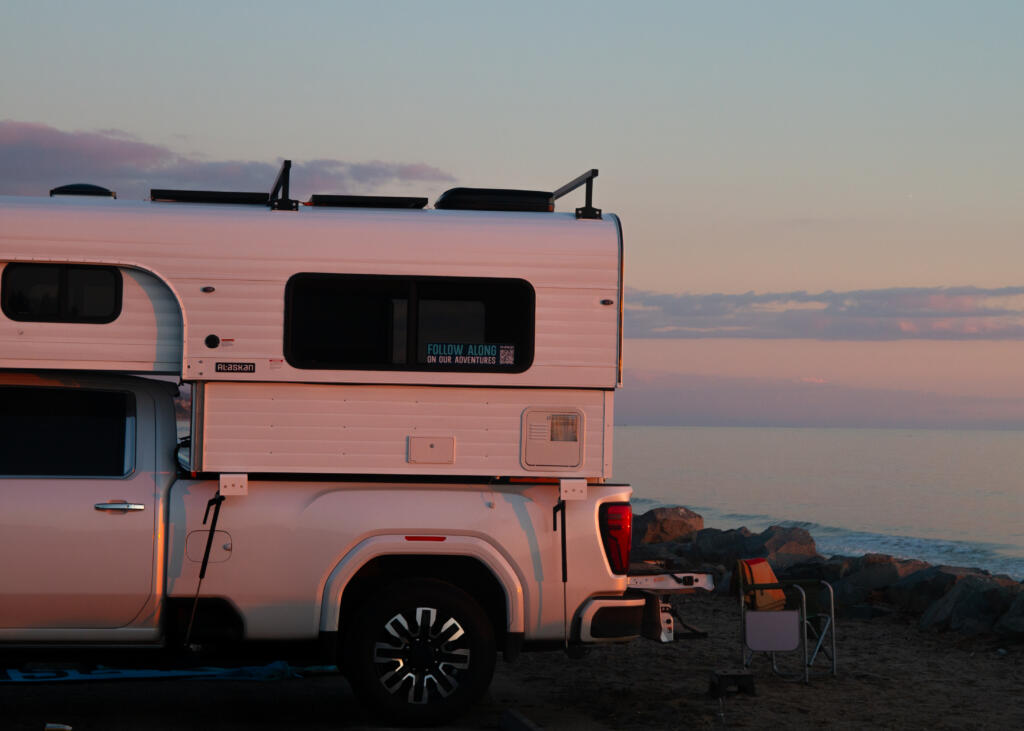
What Really Impacts Resale Value
Aside from type and brand, here’s what matters most:
Build Quality & Brand Trust
Brands like Alaskan, Northern Lite, and Four Wheel Campers are known for solid craftsmanship. Buyers are more willing to pay for names they trust.
Maintenance (This One’s Huge)
Leaks are the silent killer of resale value. Even a tiny one can lead to mold, rot, or delamination. If you reseal the roof annually, inspect everything before and after the season, and store it properly—you’re way ahead.
Bonus tip: Keep records! A folder of receipts and service notes can add thousands to the sale price. It proves you cared.
Storage Environment
Indoor storage or even a basic carport can make a massive difference. Sun, snow, and salty air all age campers fast. Humidity and UV rays are the invisible enemies.
Smart Upgrades
Solar, lithium batteries, better insulation, and efficient heaters? All good. Random holes in the roof for DIY mods or sloppy wiring? Not so much.
Timing
Spring and early summer? Hot market. January? Not so much. Also, when fuel prices rise, lightweight campers start looking extra appealing.
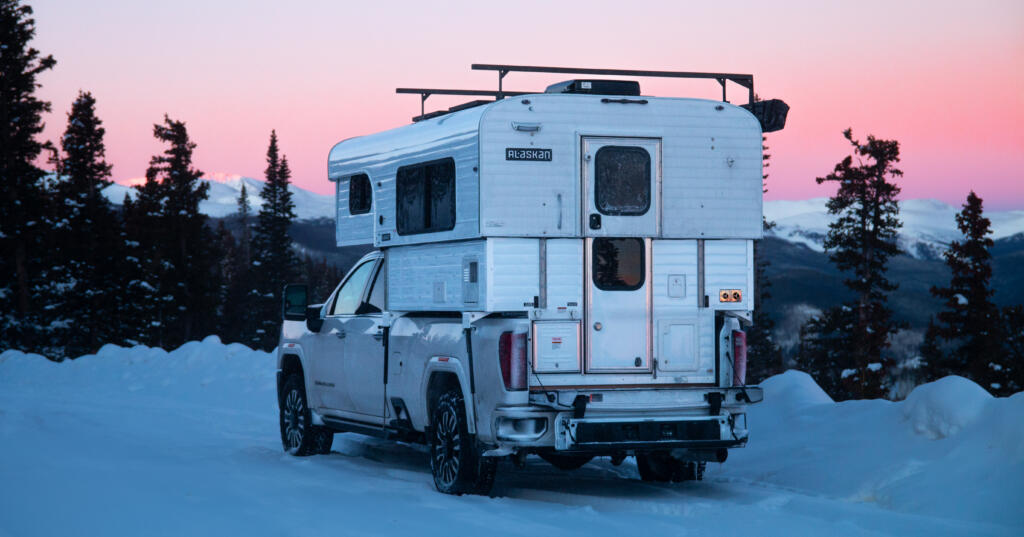
The “Care Multiplier”
Treating your camper well isn’t just maintenance—it’s compounding interest for your resale. Here’s what data and dealer experience show:
| Owner Type | Typical 5-Year Value Retention | Notes |
| Meticulous Caretaker | 65–70 % | Regular inspections, indoor storage, full documentation |
| Average User | 50–55 % | Annual maintenance, some weather exposure |
| Neglectful Owner | 30–40 % | Deferred repairs, leaks, poor storage |
That 25–30 point spread comes entirely from upkeep. In other words, the way you care for the camper can outweigh the brand name on its badge.
10 Real-World Tips to Keep Value High
- Store it under a roof, or at least out of harsh weather.
- Inspect seals and seams yearly—especially around roof vents and corners.
- Ventilate when stored to keep out moisture and mold.
- Wax fiberglass or aluminum surfaces every season.
- Check jack mounts and tie-downs for corrosion.
- Drain plumbing in winter—frozen pipes = disaster.
- Keep tires inflated and suspension maintained, even if it’s parked.
- Save every manual and receipt.
- Deep clean before listing—yes, smell matters.
- Snap photos every season. A visual history builds trust.
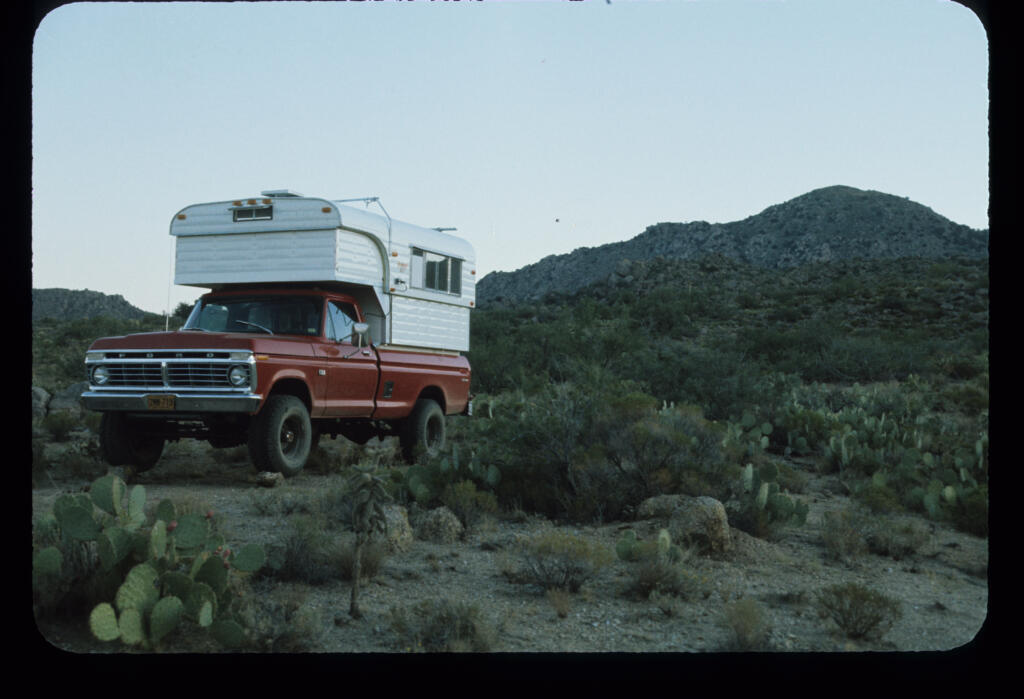
How Alaskan Campers Fit the Value Equation
You knew this part was coming—we have to brag a little.
Alaskan has spent more than 60 years perfecting one thing: the hard-sided pop-up camper. That kind of focus builds trust, and it shows. Their campers age well because:
- Timeless Design: The hydraulic lift system avoids the usual canvas issues.
- Repair-Friendly: Wood + aluminum = fixable. People restore 40-year-old units that still sell strong.
- Rare Inventory: Small batches mean less supply. Clean ones sell fast. Sometimes above book value.
Still, even an Alaskan needs love—regular resealing, seasonal prep, and occasional touch-ups. It’s not magic. It’s maintenance.
A Realistic Value Curve (Example Scenario)
| Year | Estimated Camper Value (% of Original MSRP) | Notes |
| 1 | 85 % | Normal initial depreciation |
| 3 | 70 % | Holding steady with regular maintenance |
| 5 | 60 % | Minor wear, upgrades offset aging |
| 7 | 50 % | Solid resale if clean and leak-free |
| 10 | 45 % | Long-term owner value exceeds most RV types |
| 15+ | 35 % | Still serviceable; collector or refurb value emerging |
Compare that to a typical motorhome’s 20–25 percent residual value after ten years, and the difference is obvious.
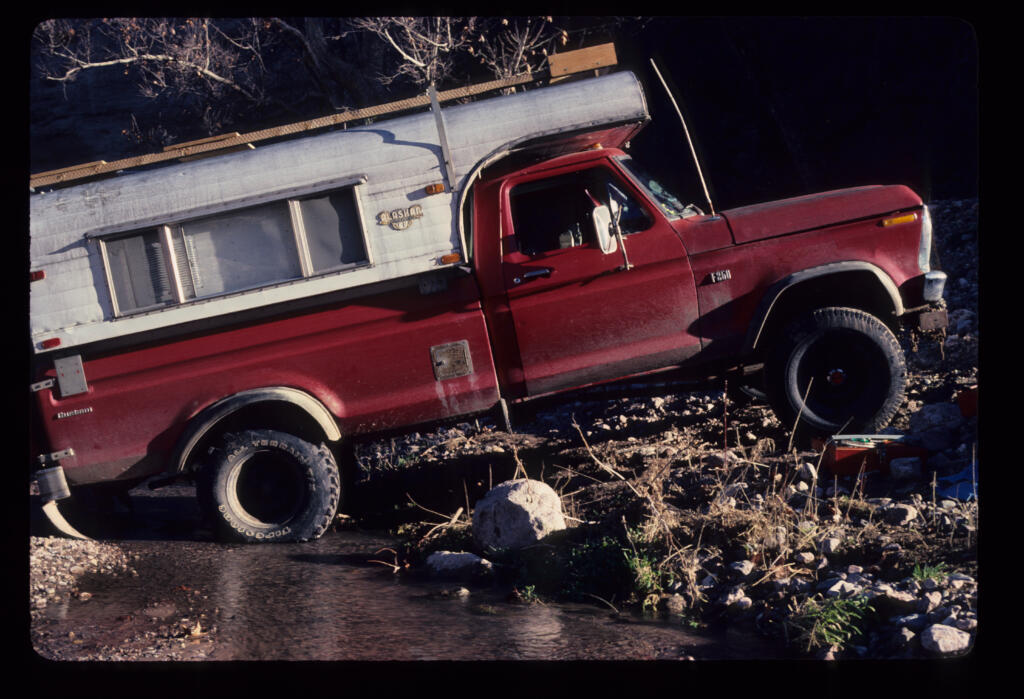
Final Thoughts
Yes—truck campers hold their value. Not automatically, though. It takes smart storage, regular upkeep, and a little bit of pride in ownership. Treat it like a long-term travel buddy, not a throwaway toy.
Plenty of Alaskan Campers from the ’70s are still kicking around. That says a lot. And if you give yours the same kind of care? It’ll likely outlast a few trucks—and earn you back a lot more than you expected.
